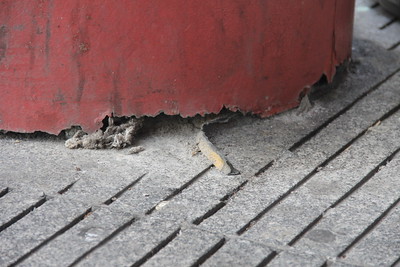Earlier this week, voters in Doña Ana County in New Mexico approved $16M in general obligation bonds to pay for repair and maintenance to the campuses of Doña Ana Community College. The bond issue is on the ballot every year, and these bonds are re-funded by the public every four years.
General obligation (GO) bonds are not my favorite bonds, but DACC has what amounts to a sinking fund to pay for repairs and improvements to its campuses. In other words, the public does get a say in whether they want to fund these projects.
The issue of neglected maintenance on higher education campuses is huge. Because the voters cannot rely on higher education administrators to devote the proper amount of money to maintaining the massive public investment in our public post-secondary institutions, we need to use a mechanism like this to ensure that these institutions address the long-term maintenance and infrastructure needs of our campuses.
Currently, Michigan law provides sinking fund opportunities for K-12 school districts. That ability doesn’t extend to community colleges. At the same time, community colleges do have the ability to put tax measures on the ballot. While they could create a self-managed sinking fund of sorts, that approach does not protect the public.
In Michigan, institutions must spend voter-approved bond money on exactly and only what they indicated in the ballot language. That’s why taxing authorities – like WCC – typically include a “rug pull” that enables them to spend the money on pretty much whatever they want.
Millage, bond requests are subject to tampering
For example, Proposal H, which Washtenaw County voters passed in 1996, used the following language:
Proposal H Washtenaw Community College Millage Proposal
Shall the tax rate limit on the total amount of ad valorem taxes which may be assessed against taxable property within the Washtenaw Community College district, State of Michigan, be increased by 0.85 mill (85 cents per $1,000 of Taxable Valuation) for a period of ten years, the years 1997 through 2006, inclusive, to provide funds for community college purposes, including job training and technology education programs, computer and other technology improvements, and operation of College facilities? It is estimated that 0.85 mill would raise approximately $6,700,000 for the College in the first year it is levied.
So, the text would lead a voter to believe that WCC intended to use the money for job training and technology education programs, and computer and other technology improvements. The measure passed, and all that money went directly to the General Fund and was used for the last item on the list – operation of the College facilities.
That’s it. That was the rug pull. Proposal H was a direct injection of cash to the General Fund with no obligations to spend the money on job training, technology education programs, computers, and other technology improvements, even though WCC implied that the money would be used for those things.
A sinking fund would be better than general obligation bonds
Initially, the Legislature intended sinking funds to pay for real estate and the construction and/or repair of school buildings exclusively. The limits on sinking funds were expanded to include school security equipment, technology improvements, student transportation, and school district vehicles.
There’s no room for rug pulls in a sinking fund, as there is with general obligation bonds and millage requests. Community college administrators would be required to use a sinking fund for the purposes limited by law. And that’s what we need to ensure that our investment in public facilities is not neglected to death.
WCC neglected the Morris Lawrence Building to the point that it required more than four times the money that the project originally called for. The MLB renovation was delayed for more than a decade, while WCC’s administration routinely shifted the budgeted funds to pay for other priorities. The taxpayers got stuck with a $13.5M bill on a project that was originally projected to cost about $3M.
We need an inviolable funding mechanism to provide capital for campus buildings. Without it, administrators (whose tenure is almost always temporary) will redirect the funds for capital improvement obligations to whatever Flavor of the Month they’ve fallen in love with. As a result, we will be on the hook for millions more than necessary when major systems (like lift stations) fail.
The people need to protect our public investments, since the elected and appointed officials who are supposed to do that haven’t lived up to that responsibility.
Photo Credit: Daniel X. O’Neil, via Flickr


























